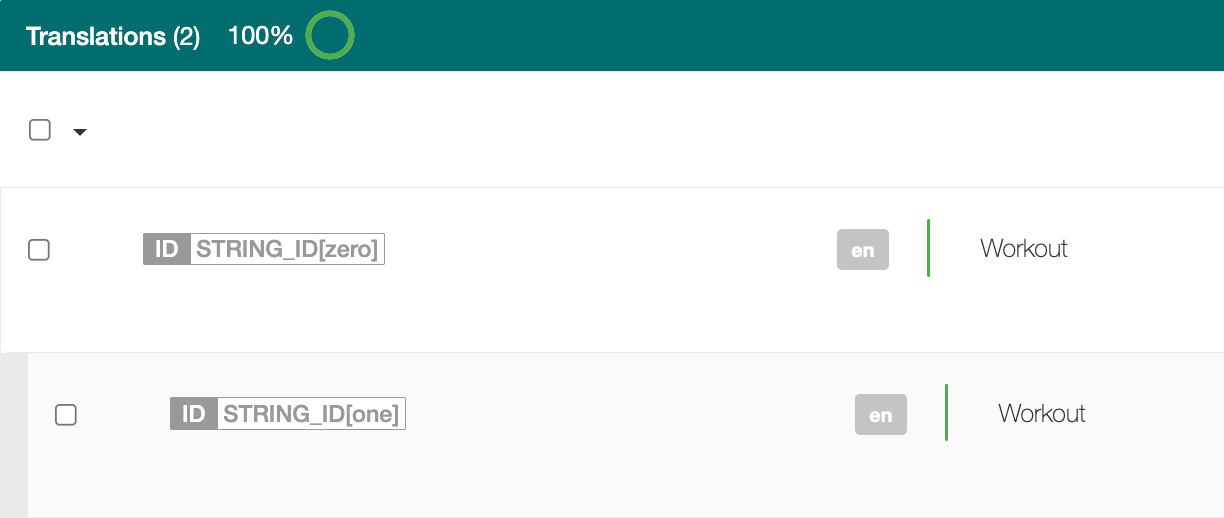

GL Strings supports pluralization which accommodates different plural rules across languages.
GL Strings supports pluralization. Pluralization allows for the display of different messages depending on the quantity selected. These different messages are based on the plural rules of the language. Possible plural quantities include:
These plural quantities are dependent on the language. For example, in English, there are only two cardinal forms (e.g. "hour" vs "hours") and four ordinal forms (1st, 2nd, 3rd, 4th). Other languages, such as Russian, have different grammar rules including additional plural forms. Unicode Common Locale Data Repository (CLDR) defines the specific categories for pluralization.
Pluralized keys in a GL Strings project must have the specific pluralization rule appended to the key (i.e. [zero], [one], [two], [few], [many], [other]). They can be added manually or via an integration.
On the GL Strings dashboard, pluralized keys are grouped together in the editor. Your project will contain all required plural forms for a given key across all languages, even if some of the languages don't use those specific plural forms. In languages with fewer plural categories, like English, the additional pluralized keys will be locked, as they don't apply to that language.
In order to use pluralization in file-based localization workflows on GL Strings (e.g. manual import/export, CLI), the file formats used for an app must also support it. See the Supported File Formats section for more detailed information.
Pluralization is separate from plural arguments for ICU Message Syntax like the example below.

For more information on plurals in ICU syntax, see our article here.
If your source files don't contain all the necessary plural forms for every language in your project, our Adaptive Plurals feature will automatically create new keys for the missing plural forms after you upload the source files to the dashboard.
By default, the Adaptive Plurals setting is enabled for all projects. It automatically creates any missing pluralized keys for all the languages in your project. The newly created keys inherit the value from the pluralized key with the smallest plural category, and the relevant pluralization rule is appended to each new key.
When downloaded, GL Strings formats the same pluralized keys according to the syntax of the given file format.
To enable or disable this setting:
